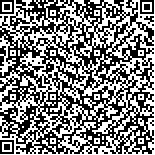| 摘要: |
| DAPI 荧光染色技术已广泛应用于浮游细菌及原生生物的定量研究, 但对底栖生物的定量效能尚缺必要的研究。比较了冷冻和冷藏两种保藏方式以及保存时间对DAPI荧光计数底栖细菌、蓝细菌、硅藻、不同粒级自养小鞭毛虫(PNF)和异养小鞭毛虫(HNF) 的影响。对黄海冷水团三个站位表层2 cm底栖样品进行的4℃冷藏与?20℃冷冻避光保存的比较研究表明, 两种保藏方式下两个站位的所有研究对象均无显著差异, 但另一站位的PNF(2~5 μm 和 5~10 μm) 的冷藏保存显著优于冷冻保存。对选取的另外两个站位 (0~2 cm和2~5 cm分层) 的样品经1个月和4个月冷藏保存后的分析表明, 对于底栖细菌、蓝细菌、PNF (5~10 μm)、PNF (>10 μm)、HNF (>10 μm) 和硅藻在保存1个月和4个月后的计数没有显著差异, 而对于PNF(2~5μm)、HNF (2~5 μm)、HNF (5~10 μm)保存4个月的数量明显低于保存1个月的样品, 如其中一个站位的0~2 cm分层的PNF (2~5 μm)丰度减少了47.4%, 2~5 cm分层的丰度减少了59.6%, HNF (2~5 μm)和HNF(5~10 μm) 经4个月后丰度降为0。本研究表明, 对底栖细菌、蓝细菌以及原生生物的定量计数可因样品、保藏方式及保存时间的不同而产生差异, 因此对于底栖样品短期内宜采用避光、冷藏保存, 并在带回实验室后尽快分析。
|
| 关键词: 冷冻 冷藏 保存时间 底栖细菌 原生生物 DAPI 荧光计数 |
| DOI: |
| 分类号: |
| 基金项目:中国科学院知识创新工程重要方向项目 (KZCX2-YW-417);国家自然科学基金项目(40576072; 40706047; 40871128) 和中国科学院百人计划项目 |
|
| The effect of different preservation types and duration on enumeration of marine benthic bacteria and protists by DAPI epifluorescence microscopy |
|
MENG Zhao-cui,LEI Yan-li,HE Ying-ying,XU Kui-dong
|
| Abstract: |
| The method of epifluorescence microscopy with DAPI staining has been widely used in the quantitative research of planktonic bacteria and protists, but scarcely applied in benthic study. We tested the effects of cold (4 °C) and freezing (?20 °C) storage and preservation duration on the enumeration of marine benthic bacteria, cyanobacteria and protists including diatoms, phototrophic nanoflagellates (PNF) and heterotrophic nanoflagellates (HNF) by DAPI epifluorescence microscopy. Samples were collected from 0~2 cm and 2~5cm sediment layers in the Yellow Sea, preserved with 2% glutaraldehyde, and stored at 4℃ and -20℃ in the dark, respectively. The results suggested no significant differences in benthic abundance between the 0~2 cm surface samples stored at 4℃ and ?20℃ at two stations, while at one station the abundances of PNF (2~5 μm, 5~10 μm) stored at 4℃ were higher than that at ?20℃. The effects of preservation duration was further tested using sediment samples collected from 0~2 cm and 2~5 cm sediment layers and stored at 4℃ in the dark. The abundances of bacteria, cyanobacteria, diatoms, PNF and HNF were measured after one- or four-month storage. Statistical analyses showed that storage time had no significant effect on the enumeration of benthic bacteria, cyanobacteria, PNF (5~10 μm), PNF (>10 μm), HNF (>10 μm) and diatoms. However, the abundances of PNF (2~5 μm), HNF (2~5 μm) and HNF (5~10 μm) were distinctly decreased after four months. Our experiments suggest that preservation temperature and duration as well as sediment types may influence the enumeration efficiency of marine benthic microorganisms. Thus, it is recommended that marine benthic samples can be temporarily stored at 4 °C in the dark and should be enumerated as soon as possible.
|
| Key words: freezing storage cold storage storage time benthic bacteria protists DAPI epifluorescence enumeration |
